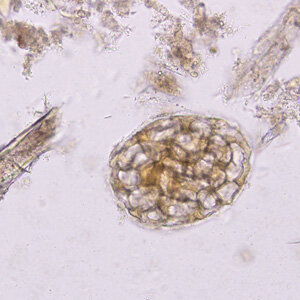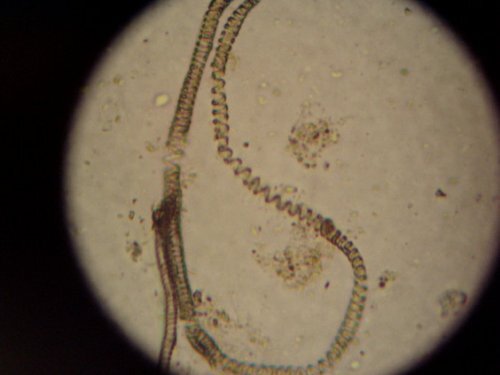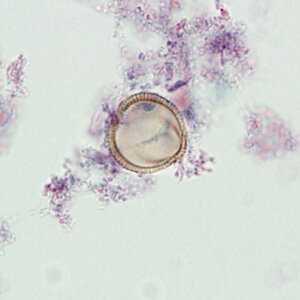cyberlocc
Chameleon Enthusiast
So Gutload, are we overthinking it? I love these more in depth topics, as you all know, they help us grow as a community.
So over the last while, but especially in the last few days, I have absorbed information, that I likely have before. However, all the pieces of a bigger puzzle have fallen together and have my wondering. Are we overthinking gutloads?
We all know, the typical advice around here and elsewhere in regards to gutload. We know the products, that are labeled as useless, and the thoughts that are praised, like variation of fruits and veggies.
In the last few months, we have seen another Idea pop up from Petr Nectas recommending to only Gutload with Bee Pollen (I believe that he said Straight Pollen, and there is good reason for it).
Why does Petr think this, well the answer is that there is data, showing that Chameleons cannot digest fruits and vegetables. Kinyoga, has a better way of saying it.
"Digestion has two parts...mechanical and chemical. Chewing, etc ...mechanical ways...break the food down into smaller pieces and then the chemical digestion finishes the job with the use of enzymes.
The chameleon obviously can chew the food, including whatever is in the insect's system...but do they have the enzymes in their gut to break down the food into small enough pieces/molecules to be absorbed by the chameleons system?"
https://www.chameleonforums.com/thr...tydid-grasshoppers.164652/page-2#post-1562547
However Chameleons can Digest Pollen, can they digest other things, maybe, however some data and Petr suggest, they cannot digest Fruits/Vegetables, this can be seen in their fecals. When a Chameleon consumes Fruit or Vegetables, it comes out in the Fecals, as hole pieces, undigested.
So now, Kaizens great blog on Gutloading brings up a couple theories about that. So lets see his Summary on them.
"For instance, if it turns out that e.g. a bee and its pollen content contain roughly the same nutrients as some complicated concoction of collard greens, spirulina, oranges and hibiscus powder when fed to some variety of roach, then the two views end up agreeing about what nutrients we ought to be giving to our chameleons via gutloading. They just disagree about how we ought to deliver those nutrients. One side says by feeding bees (wasps, flies etc.) sufficiently gutloaded with, and coated in, pollen; the other side says by feeding commonly available feeder insects a complicated concoction of the ingredients listed in theory 1. Some further item/s of contention must stand in between the relevant parties."
https://www.chameleonforums.com/blogs/the-philosophy-of-gutloading-part-1.2437/
I think we can all agree either way, healthy insects, equal healthy Chameleon. But what is needed for a Healthy Insect?
Now the concoction that Kaizen mentions is very similar to a Marketed product. A Marketed product, that gets labeled by the community as Worthless.
Those Little Orange Cubes, by Flukers. We have all seen it, a lot of us have likely used it, and then were told its worthless. The question is, is it? Sure, its mostly water, however if fed in large amounts that doesn't matter does it? The Flukers mix, has Spliruana, and lots of other vitamins and minerals, present in it. Its easy to digest for the Insects, and anything not digested can also easily be digested by the Chameleon. Something that cannot be said of Fruits and Veggies, maybe, we dont think.
We also have to look at the source. This isnt a no name, nobody company selling this product, its Flukers, one of, if not the Largest Cricket farm in the US. If they are feeding their millions of crickets, this orange stuff and it shows up to you healthy and alive, whether you buy it from them direct, or the plethora of other retailers that buy their crickets from them.
So the question is, is Flukers or the numerous other gutload products have it wrong? Or do we? Are we overthinking things, making things harder on ourselves for no reason? Do we really need to have this varied set of fruits and veggies to feed the bugs we feed off? Or could we use, or create our own Insect Gutload, that is at the end of the day, actually superior because it can actually be digested?
Would a Bee Pollen Gel be better? I know Petr does not like the Algae Component in the Gel (Agar Agar/Carrageenan) so you dont have to use Gel, but the food/water source is beneficial.
Your thoughts? Links? Studies? Ideas? Anything, everything . Lets Discuss!
. Lets Discuss!
So over the last while, but especially in the last few days, I have absorbed information, that I likely have before. However, all the pieces of a bigger puzzle have fallen together and have my wondering. Are we overthinking gutloads?
We all know, the typical advice around here and elsewhere in regards to gutload. We know the products, that are labeled as useless, and the thoughts that are praised, like variation of fruits and veggies.
In the last few months, we have seen another Idea pop up from Petr Nectas recommending to only Gutload with Bee Pollen (I believe that he said Straight Pollen, and there is good reason for it).
Why does Petr think this, well the answer is that there is data, showing that Chameleons cannot digest fruits and vegetables. Kinyoga, has a better way of saying it.
"Digestion has two parts...mechanical and chemical. Chewing, etc ...mechanical ways...break the food down into smaller pieces and then the chemical digestion finishes the job with the use of enzymes.
The chameleon obviously can chew the food, including whatever is in the insect's system...but do they have the enzymes in their gut to break down the food into small enough pieces/molecules to be absorbed by the chameleons system?"
https://www.chameleonforums.com/thr...tydid-grasshoppers.164652/page-2#post-1562547
However Chameleons can Digest Pollen, can they digest other things, maybe, however some data and Petr suggest, they cannot digest Fruits/Vegetables, this can be seen in their fecals. When a Chameleon consumes Fruit or Vegetables, it comes out in the Fecals, as hole pieces, undigested.
So now, Kaizens great blog on Gutloading brings up a couple theories about that. So lets see his Summary on them.
"For instance, if it turns out that e.g. a bee and its pollen content contain roughly the same nutrients as some complicated concoction of collard greens, spirulina, oranges and hibiscus powder when fed to some variety of roach, then the two views end up agreeing about what nutrients we ought to be giving to our chameleons via gutloading. They just disagree about how we ought to deliver those nutrients. One side says by feeding bees (wasps, flies etc.) sufficiently gutloaded with, and coated in, pollen; the other side says by feeding commonly available feeder insects a complicated concoction of the ingredients listed in theory 1. Some further item/s of contention must stand in between the relevant parties."
https://www.chameleonforums.com/blogs/the-philosophy-of-gutloading-part-1.2437/
I think we can all agree either way, healthy insects, equal healthy Chameleon. But what is needed for a Healthy Insect?
Now the concoction that Kaizen mentions is very similar to a Marketed product. A Marketed product, that gets labeled by the community as Worthless.
Those Little Orange Cubes, by Flukers. We have all seen it, a lot of us have likely used it, and then were told its worthless. The question is, is it? Sure, its mostly water, however if fed in large amounts that doesn't matter does it? The Flukers mix, has Spliruana, and lots of other vitamins and minerals, present in it. Its easy to digest for the Insects, and anything not digested can also easily be digested by the Chameleon. Something that cannot be said of Fruits and Veggies, maybe, we dont think.
We also have to look at the source. This isnt a no name, nobody company selling this product, its Flukers, one of, if not the Largest Cricket farm in the US. If they are feeding their millions of crickets, this orange stuff and it shows up to you healthy and alive, whether you buy it from them direct, or the plethora of other retailers that buy their crickets from them.
So the question is, is Flukers or the numerous other gutload products have it wrong? Or do we? Are we overthinking things, making things harder on ourselves for no reason? Do we really need to have this varied set of fruits and veggies to feed the bugs we feed off? Or could we use, or create our own Insect Gutload, that is at the end of the day, actually superior because it can actually be digested?
Would a Bee Pollen Gel be better? I know Petr does not like the Algae Component in the Gel (Agar Agar/Carrageenan) so you dont have to use Gel, but the food/water source is beneficial.
Your thoughts? Links? Studies? Ideas? Anything, everything






